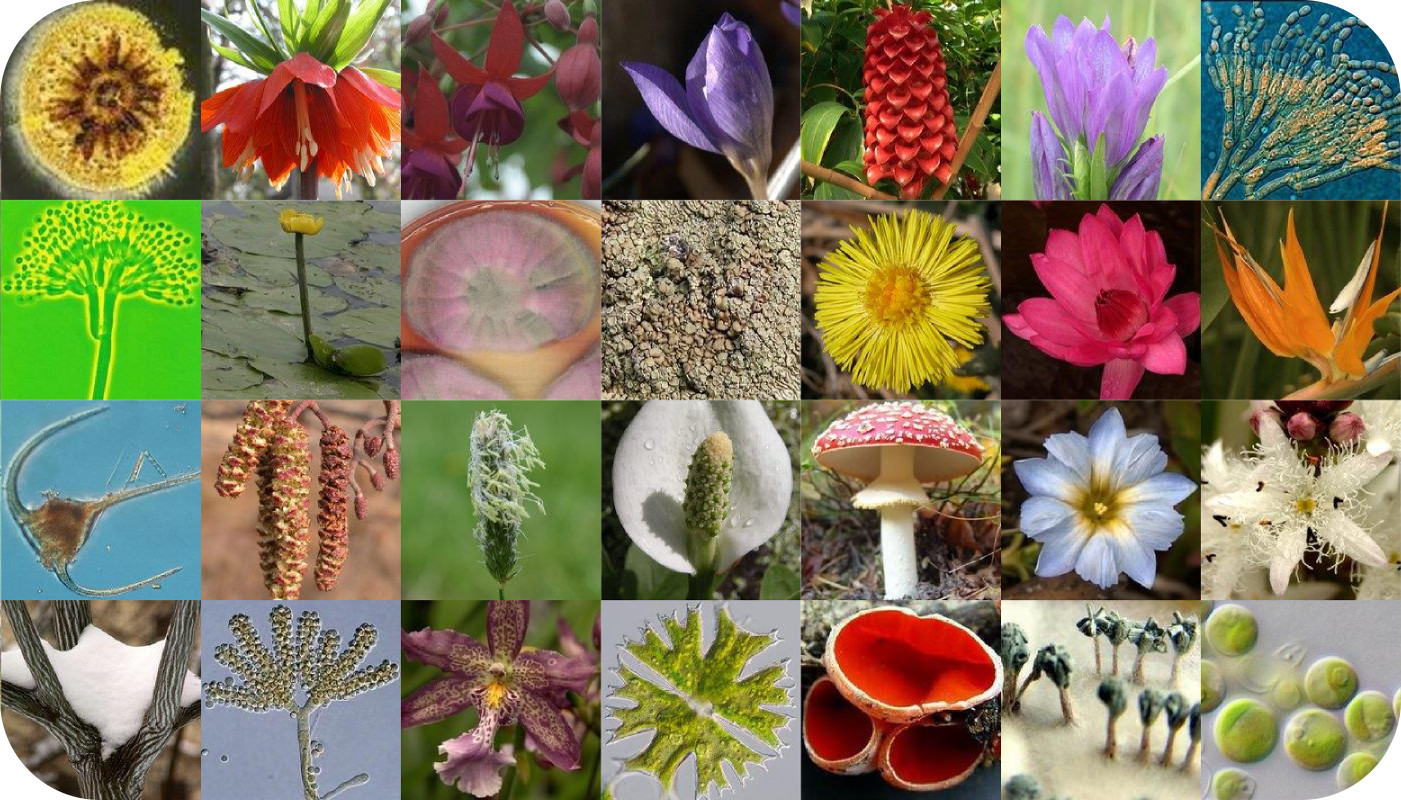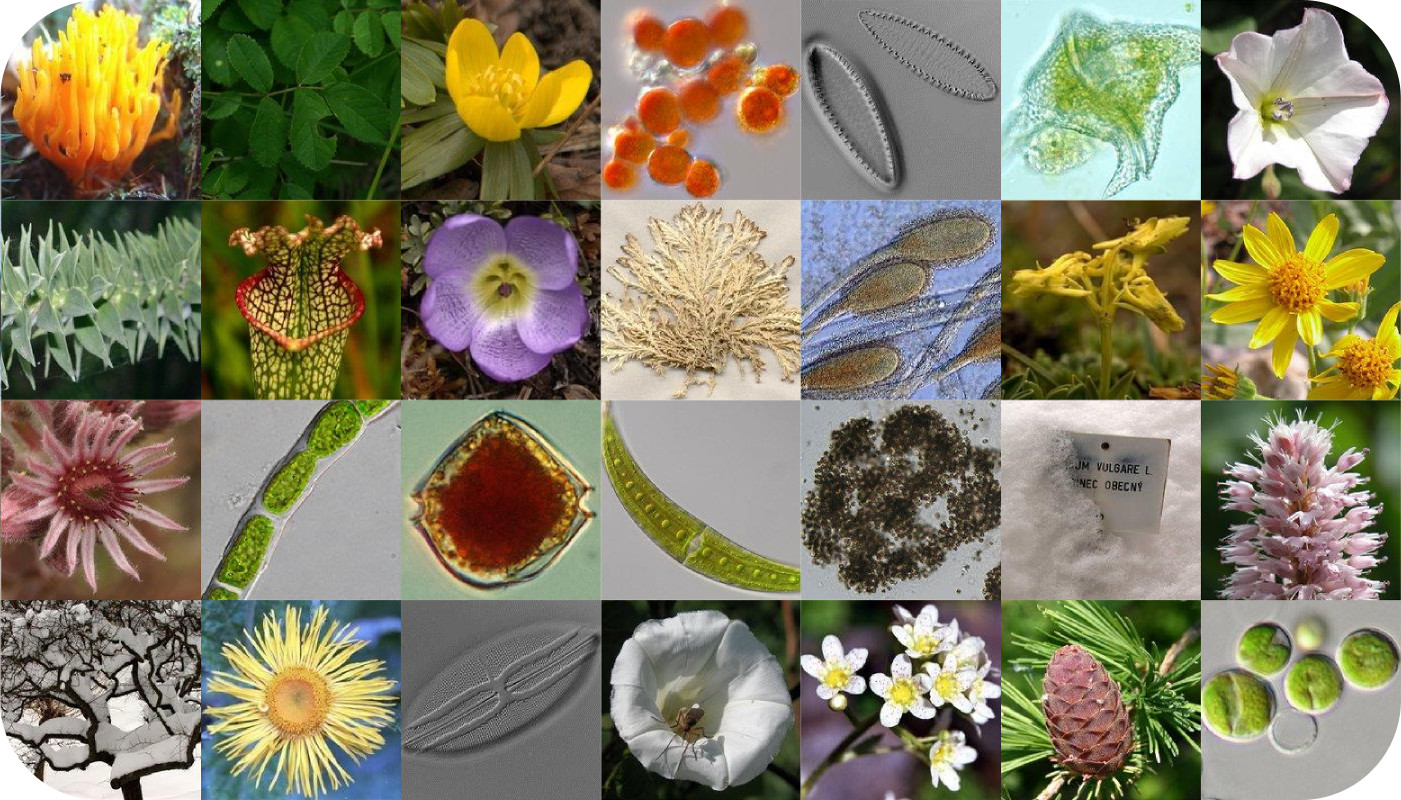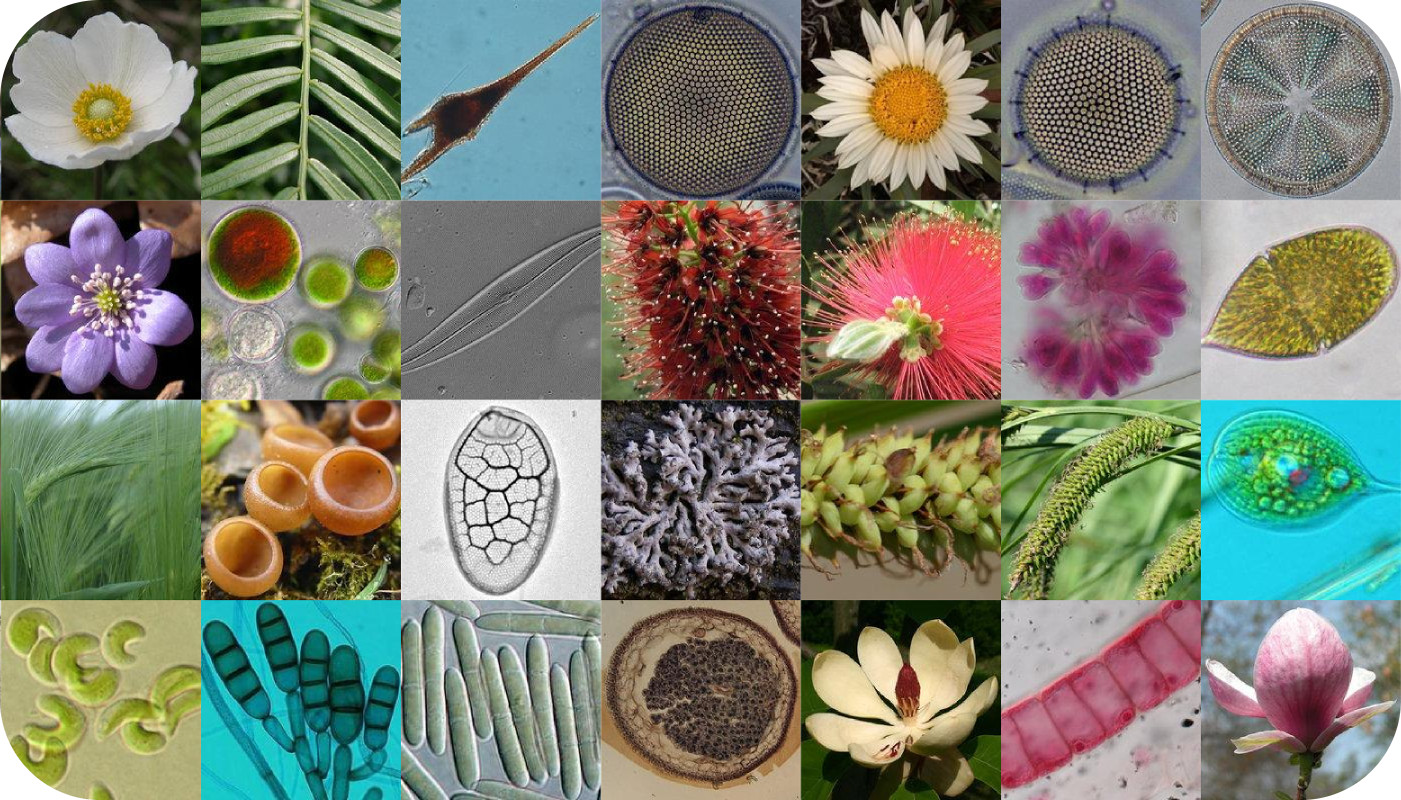Research at the Department of Botany primarily focuses on the following areas
Phycology
- See on https://botany.natur.cuni.cz/algo/research.html
- Ecology of phytobenthos in bogs
- Taxonomy, ecology and biodiversity of chrysomonads, https://chrysophytes.eu/
- Ecology of terrestrial biofilms
- Phenotypic plasticity and geometric morphometrics of microalgae
- Ecophysiology and stress tolerance of green algae
- Taxonomy and phylogenetics of green aerophytic algae
- Evolution and cryptic diversity of desmidiales
- Molecular diversity and evolution of golden algae
- Species concept, diversity and ecology of lichen photobionts
- Molecular phylogenetics and ecology of diatoms
- Pavel Škaloud skaloud@natur.cuni.cz
- Jiří Neustupa, Yvonne Němcová, Jana Kulichová, Jan Šťastný, Martina Pichrtová
Mycology
- see on https://botany.natur.cuni.cz/myko/index.research.html [only in Czech]
- Endophytic fungi of broadleaved trees
- Taxonomy and ecology of rusts
- Ecology of soil microfungi on abandoned sedimentation basins and in extreme habitats
- Biodiversity of pyrenomycetes
- Ecology of fungi in coniferous litter
- Diversity and ecology of fungi associated with subcorticolous insect
- Diversity of soil microfungi in natural habitats (e.g. Šumava Mts., Giant Mts.)
- Ondřej Koukol ondrej.koukol@natur.cuni.cz

Population ecology
- dynamics of plant populations, role of individual components of their life cycle
- distribution of plants in the landscape and metapopulation dynamics, how plants cope with a changing landscape
- interaction of plants and pollinators, herbivores and pathogens and their impact on plant life
- population biology of invasive plants: seeking weak spots in their life cycle for targeted management
- Zuzana Münzbergová zuzmun@natur.cuni.cz
- Tomáš Koubek, Tomáš Herben
Conservation biology
- management of scientifically valuable areas (mowing, grazing) and its impact on biodiversity, proposed management programs for protected areas
- targeted protection of rare species: knowledge of their population biology and genetics as a pre-requisite for successful protection
- Zuzana Münzbergová zuzmun@natur.cuni.cz
Experimental and evolutionary ecology
- plant behavior and phenotypic plasticity: how plants react to their neighbors, herbivores, pathogens and a changing external environment
- mutual relationships of individual plants in competition
- vegetative/clonal growth as a key manifestation of plant life, its potential, and relationship to the environment
- Martin Weiser weiser2@natur.cuni.cz
- Tomáš Koubek, Tomáš Herben

History and dynamics of vegetation and landscapes
- forest vegetation and its dynamics, the impact of forest management today and in the past
- how today’s vegetation reflects the structure of the landscape in the past, landscape memory and vegetation, use of historic maps, old aerial photography, paleoecological data and archive records
- succession in the modern landscape during the past century, processing of old records of vegetation, maps and soil analysis as a unique source of information about past vegetation, succession and landscape renewal
- Pavel Kovář kovar@natur.cuni.cz
Tropical ecology
- ecology of the South American páramos, causes of their biodiversity, evolution and phylogenesis of model groups in the páramos
- physiological ecology of alpine tropical plants, adaptation to temperature extremes
- Petr Sklenář petr@natur.cuni.cz
- Diana Libeth Aparicio Vásquez
Quaternary paleoecology
- long-term dynamics of vegetation and quantitative reconstruction of land cover in the past
- impact of climate change and disturbances (fires, land use) on vegetation
- pollen analysis, vegetal macro remains, carbon analysis and more
- Petr Kuneš petr@kunes.net
- Petr Pokorný, Vojtěch Abrahám, Přemysl Bobek

Biosystematics and evolution
- Biosystematics studies of polyploid alliances. The project is aimed at (i) elucidation of variation of polyploid taxa at different levels of organization, and (ii) understanding the causes and consequences of the observed variation. Morphological divergence, ecological requirements, geographic distribution, mode of reproductions, and genetic variation of particular cytotypes is investigated. A suit of molecular approaches, multivariate morphometrics, and cytometric techniques is used.
- Evolutionary dynamics of polyploid groups, processes in sympatric diploid-polyploid populations. The project is aimed at gaining insights into microevolutionary processes shaping population dynamics of polyploid alliances. Specifically, we address the role of unreduced gametes, reproductive barriers, niche differentiation, interactions between and among cytotypes (competition, mating, siring success) as well as between cytotypes and other trophic levels (pollinators, parazites, mycorrhizal fungi) for the rise, establishment and further evolutionary success of particular cytotypes. Special attention is paid to sympatric diploid-polyploid populations because these systems reflect certain conditions characteristic of the early stage of polyploid evolution. Cytometric techniques, experimental approaches and ecological and phenological observations are used.
- Phylogeography of polyploid complexes
- Tomáš Urfus urfus@natur.cuni.cz

Research focus – main fields pursued at the Department of Botany
- Ecology, distribution, diversity and taxonomy of saprotrophic and parasitic fungi, lichens and mosses in natural and artificial, anthropogenically strained ecosystems.
- Role of saprotrophic fungi during the decomposition of waste and the cycle of life in ecosystems.
- Significant microscopic fungi in the human environment, in the food industry and health care (allergenic micromycetes, clinically significant fungi).
- Interaction of microscopic fungi with other microorganisms (arcellinida), arthropods (oribatida, wood-destroying insects) and trees.
- Morphology, taxonomy and ontogenesis of select groups of algae.
- Molecular phylogenetics of green algae.
- Ecology and distribution of plankton and benthic algae populations in standing and flowing freshwater; ecology of synusia of soil and aerobic cyanobacteria and algae.
- Geometric morphometrics in the ecology of green algae and chrysomonads.
- Polyploids and their role in the evolution of vascular plants.
- Population dynamics of polyploid complexes.
- Microevolution processes in sympathetic populations of various cytotypes.
- Genetic variability of rare and endangered species of vascular plants.
- Apomictic complexes.
- Biosystematic study of vascular plants, with an emphasis on Central European and Mediterranean species.
- Phylogeography and study of distribution.
- Phytogeograpy within the territory of the CR.
- Morphology of vascular plants.
- Structure, classification and dynamics of modern vegetation.
- Changes in vegetation in historical periods.
- Dynamics of ecosystems in river flood zones.
- Population biology of species and its role for the survival of species in the landscape.
- Genetic variability of plants in relation to ecology.
- Mechanisms determining the richness of species in plant communities.
- Relationships between plants and animals, and other groups of organisms.
- Paleoecology and archeobotany of the Central European landscape.
- Population biology of rare and vanishing species of our flora.
- Ecology of invasive plant species.
- Colonization and succession of newly established habitats.
- Tropical ecology.





















